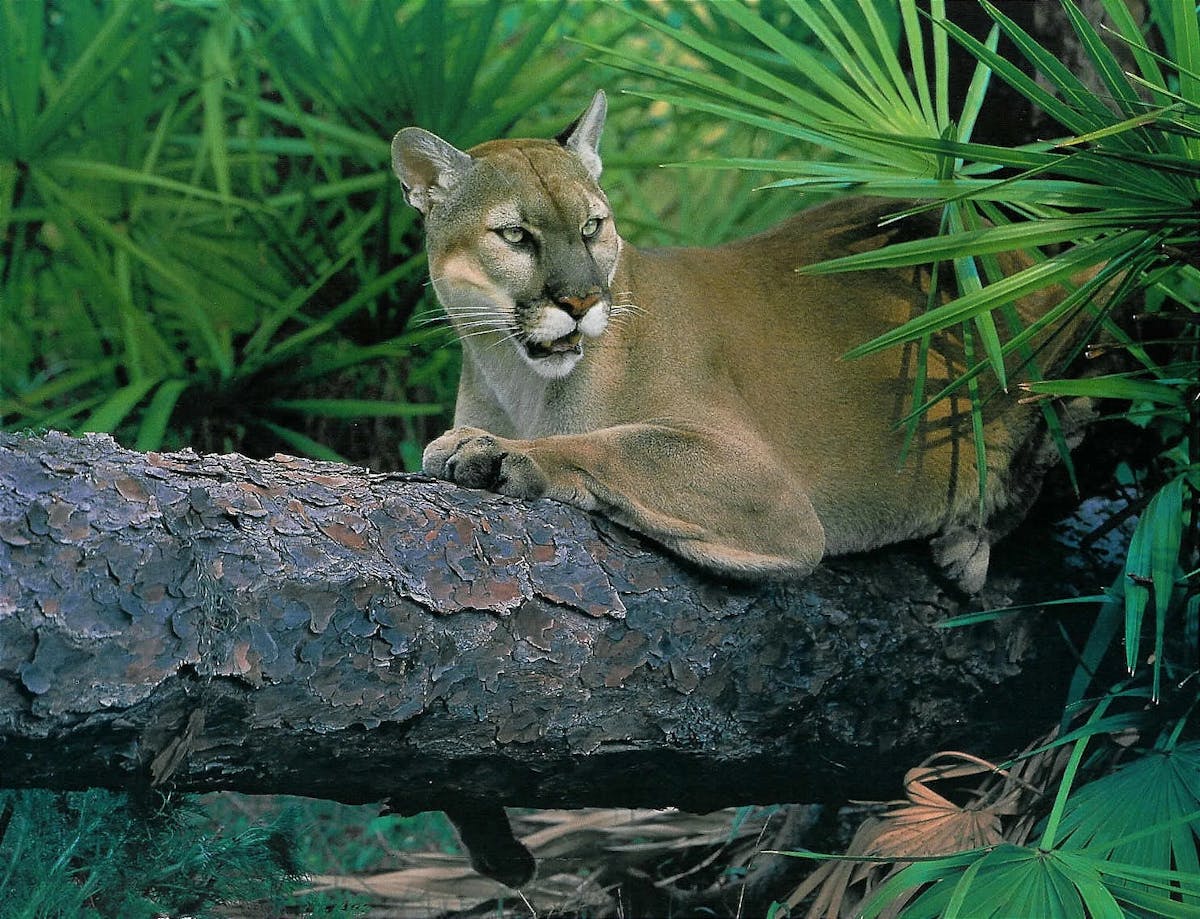The Florida panther: A glimpse into the wild heart of the Everglades state
One Earth’s “Species of the Week” series highlights an iconic species that represents the unique biogeography of each of the 185 bioregions of the Earth.
The Florida panther (Puma concolor coryi) is a solitary, elusive, and territorial big cat highly adapted to the subtropical wetlands and the dry elevations in west central Florida. Its ancestor was a cougar that ranged west of the Mississippi several thousand years ago.

The Florida panther (Puma concolor coryi) is the iconic species of the Caribbean Islands bioregion (NT26), located in the Caribbean subrealm in the Central American realm.
Physical traits of Florida panthers
Female Florida panthers weigh between 27 and 45 kilograms (60-100 lbs), while males weigh between 45 and 73 kilograms (100-160 lbs). On average, they measure two meters (6.6 ft) from the nose to the tip of the tail. Both have a white-flecked nose with a dark brown coat that makes it difficult to distinguish in the shady forest or while swimming in the swamps.
Exploring their natural range
The Florida Panther is endemic to a well-defined area in the state of Florida. Their range spans from the uplands in Lehigh and Immokalee north of an imaginary line over Naples and across the large swamp in the Big Cypress National Preserve, which drains southward into the Everglades National Park.
Individual panthers require large extensions of land for hunting and breeding, and they mark their boundaries with scratches, urine, and feces.
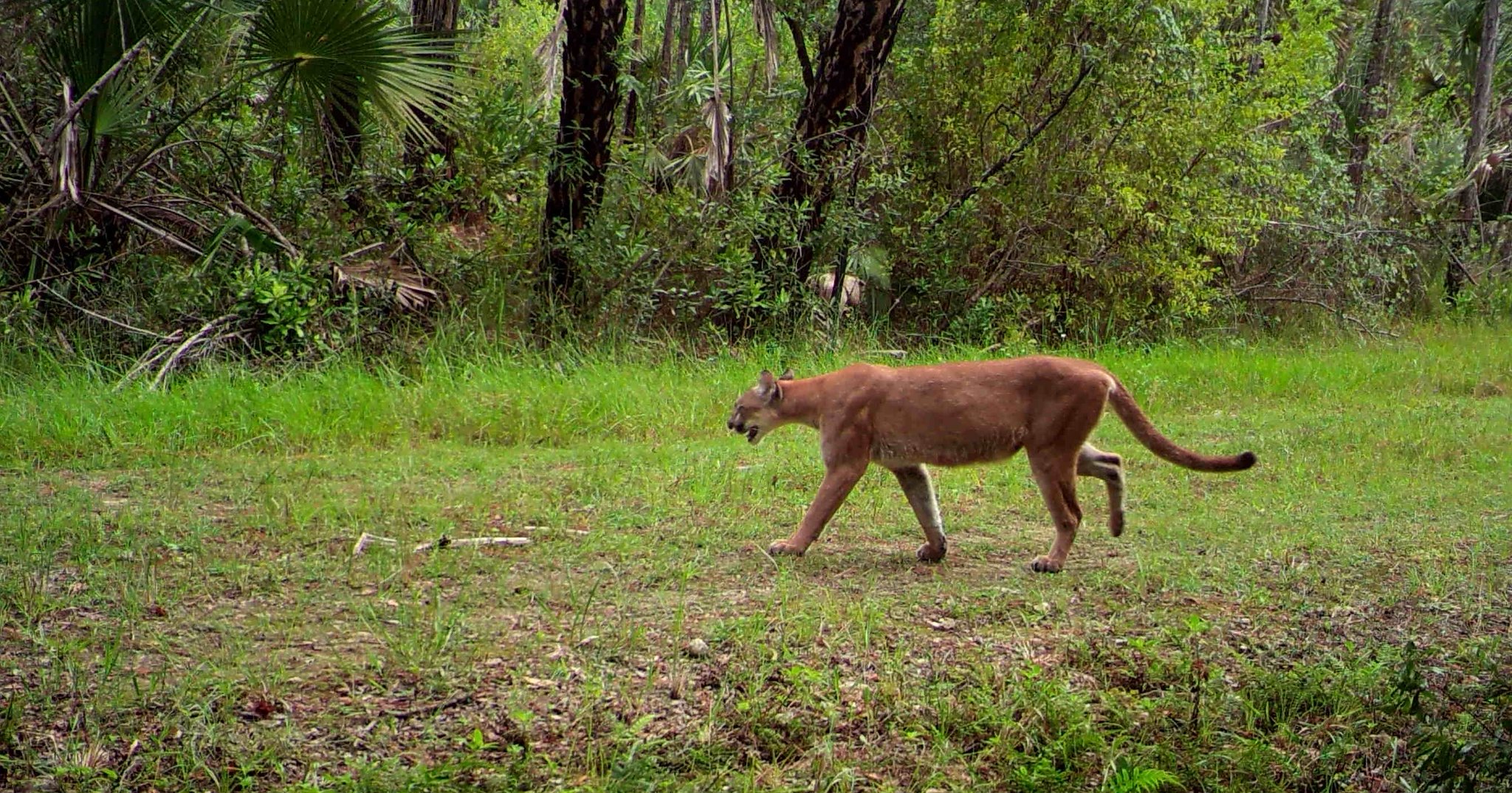
A solitary Florida panther roams its lush, subtropical territory. Image credit: Creative Commons, FWC Fish and Wildlife Research via Flickr.
Habitat diversity: From uplands to lowlands
Their habitat in the ‘uplands’ is known as hardwood hammocks: it is populated with live and laurel oak, sabal, and royal palm on well-drained, dry soil. Across the lowlands, there are swamps filled with bald cypress and intermixed with freshwater marshes covered with grass, bulrush, and pine flatwoods.
These complex ecosystems are surrounded by, and at times, interrupted by, infrastructure and modified land for citrus agriculture, crops, pasture, rock mining, and both low- and high-density residential development.
Reproduction and early stages of life
The gestation period of the Florida panther is 90 to 105 days, depending on the moon cycle. The cubs (two on average and up to four) are born blind and completely rely on the milking mother. The den can be in areas dense with palmetto trees or beneath a rock surrounded by vegetation on the well-drained ground in the uplands.
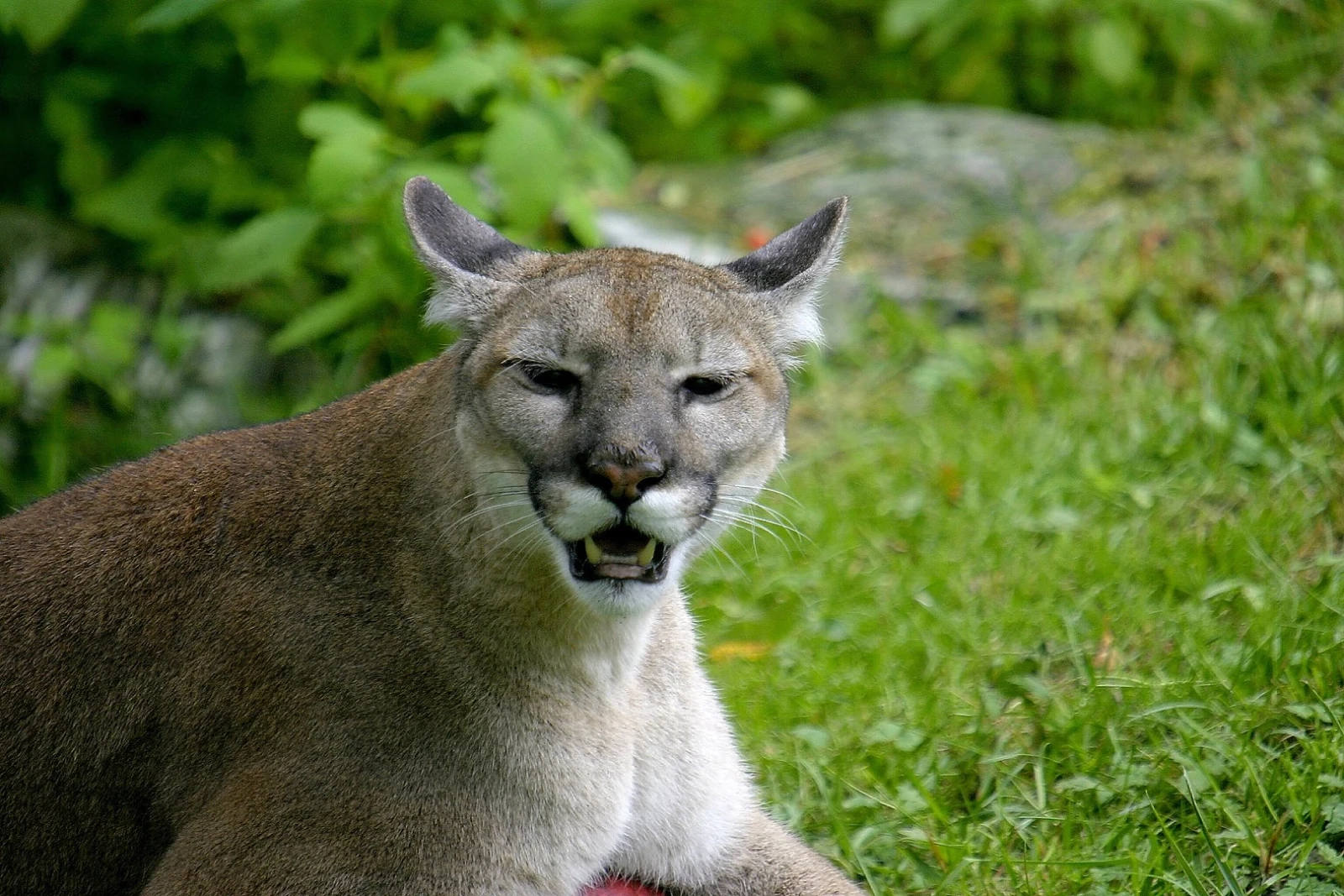
Florida panthers are a keystone species, playing a crucial role in maintaining the delicate balance in their ecosystems. Image credit: Animalia.Bio.
The panther's prey and vital predatory role
Both adult and young panthers prey on raccoons (Procyon lotor), wild hogs (Sus scrofa) and white-tailed deer (Odocoileus virginianus), as well as armadillos, rabbits, rats, and domestic cats. White-tailed deer and raccoons are more common prey in the marshlands of Big Cypress National Reserve, while wild hogs are the primary prey in the dry uplands north of the reserve.
By predating on these species, Florida panthers play a crucial role in regulating their numbers, thus preventing overpopulation and the subsequent overgrazing or depletion of resources. This ecological service is vital for maintaining the area's biological integrity and resilience.
Studies by scientists from the Florida Fish and Wildlife Conservation Commission have shown that livestock consumption by Florida panthers is minimal and only comprises goats.
Indigenous cultural significance and conservation initiatives
The Seminole and Miccosukee have extensive territories in the area. They practice fishing, gathering nuts and berries, and hunting and using drier, higher grounds to grow the ‘three sisters’ comprised of maize, squash, and beans, as well as seasonal plants such as melons and watermelons.
Despite the Everglades Parkway that cuts through their territory, the Seminole have remained strong in their traditional ways of living and have become a federally recognized Tribe. Over the past five decades, they have set up citrus production farms, and for the benefit of the panther, they have implemented the Seminole Everglades Restoration Initiative.
This initiative is an act of responsibility that is being overseen by the Creator, as ever since the beginning, he had a special love for coo-wah-chobee, meaning “crawls on four legs, close to the ground.” They tell this Creation story often to remember the original role of voiceless animals and how much they, as sensible people, can do on their behalf.
The multi-year project has significant benefits on the quality and quantity of water flowing through the Big Cypress Reservation and into the Everglades. A healthy dynamic of the wetlands depends on the water storage capacity and the control of big urban development.
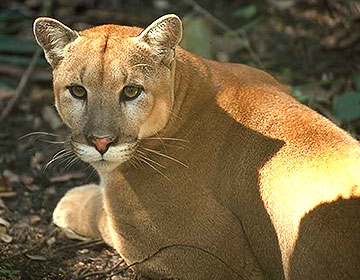
The Seminole People have a special love for the coo-wah-chobee, meaning “crawls on four legs, close to the ground.” Image Credit: US Fish And Wildlife Service Via Flickr.
A climate solution: Protecting the Florida panther and its habitat
Preserving the Florida panther and its habitat is not only a moral and ecological necessity but also a strategic climate solution. As a keystone species, the panther plays a pivotal role in maintaining the health of its ecosystem, which, in turn, supports global climate regulation through carbon sequestration and biodiversity preservation.
The intertwined fate of the panther and its habitat underscores the interconnectedness of all life forms. By championing conservation efforts, we not only safeguard the Florida panther but also contribute to the resilience of our planet, ensuring a balanced and sustainable future for all species, including our own.
Explore More Iconic SpeciesYou might also like
-
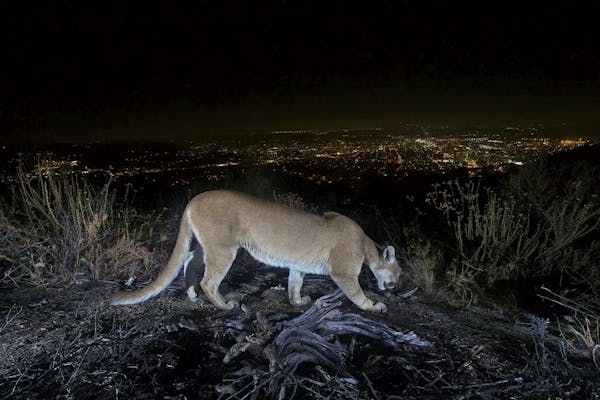
Climate Hero: P-22
A famous Los Angeles mountain lion, P-22, inspires the creation of the world's largest wildlife overpass, an act of nature conservation that bridges the human and animal worlds.
-
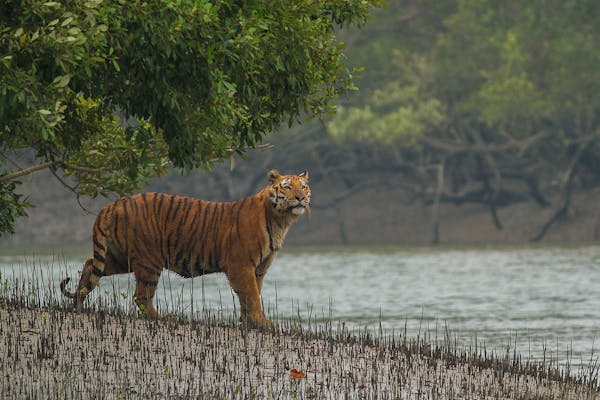
Bengal tigers: unsung heroes of the Sundarbans Mangroves
Explore the power of predators and the vital role that Bengal tigers play in shaping the Sundarbans Mangrove ecosystems.
